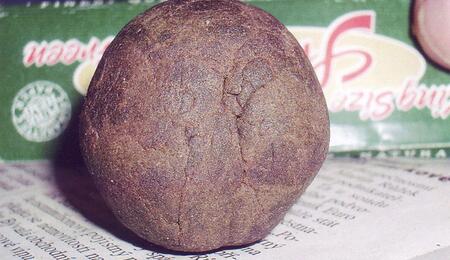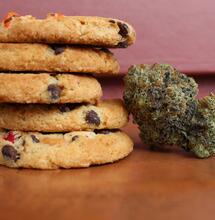The rise of HASH in the USA and Canada

.
Hash is a strong cannabis concentrate containing high levels of THC that is traditionally sold as a solid resin that is ingested via smoking. Hash has had quite the makeover recently however and is enjoying a resurgence in popularity thanks to the rise of vaporisation or ’dabbing’ as a cannabis ingestion method. As a result the hash and concentrates market is booming, with recent estimates putting the total global concentrates market at 3.7 billion USD in 2018 with an expected rise to 13.7 billion USD by 2026.
With all these new products entering the market at such a phenomenal pace, the OG of concentrates-Hash does tend to get overlooked. Hash is a dark horse that should never be underestimated and believe me, at some point as your cannabis consumption advances from novice to more advanced, sooner or later you are gonna wanna see what all the fuss is about. So before we look at the Hash culture as it is today in the US and Canada first of all lets have a look at what exactly hash is, where it came from and most importantly how it is made.
Hashish, or hash for short, is made from the “kief,” or the resin of cannabis plants which is dried and pressed into “cakes,” or bricks, which can then be smoked in pipes, vaporised or mixed with other smoke-ables. Hash is generally yellow, brownish, sometimes reddish, and can be soft and crumbly, pliable, or stiff and brittle. Hashish is much stronger than cannabis flower and isn’t for a first timer or those with low tolerance.
Many experienced users prefer it however because it gives a "cleaner" high. No plant material is burned, people know right away what the effect is rather than having to waiting an hour or more for an edible to kick in. All these things make it a perfect choice for some medicinal users who desire chronic pain relief.
Many people also love the nostalgia of hash and its deep, earthy aroma and relaxing high. Smoking hash can transport you back to better, simpler times. Getting high on a back packing trip with new acquaintances, or smoking mixed tobacco and hash spliffs on the beach round a campfire at night. I personally smoked hash way before flower and I do find that it does take me back to those times of my youth.
This strong nostalgia element may actually have some science behind it too, as when the terpenes in hash were studied, an entirely new terpene was discovered. This new terpene was named ‘Hashishene’, as it is not found in abundance in anything else in the world, not even pot and so it is something entirely unique to traditional hash.
Hashish is steeped in history and originated in ancient Northern India with the first known mention of it being in Egyptian writings from 1123AD. Hash has been popular for centuries in North Africa, the Middle East and in countries such as Pakistan, Morocco and Lebanon, before spreading to Europe, and the Americas later on. Each source country has varying methods of producing hash, all which result in a different final product.
Hash can take the form of either a solid or resin depending on both preparation and temperature. Pressed hash is usually solid, whereas water-purified hash or "bubble melt hash” as it is also known is often a paste-like substance that varies in colour depending on what cannabis has been used. To make hash there are several processes, all producing a difference in taste, texture, and potency. The oldest method being “finger hash” where you simply rub the buds in your hands and collect the kief and oils until they are thick enough to scrape off and squash together. This process originated in India but is still widely practiced around the world, especially in the Caribbean. Dry-sieve hash is another simple ancient method that is still popular today. Dried plants are banged over screens, dropping kief into to a collection tray below which is then pressed either by hand or with a mechanical press. The modern equivalent of this being the collection of kief in harvesting trays and grinders which is then pressed together.
Modern commercial hash that you'll see these days however is made much differently. Ice-water or “bubble hash” is a process where cannabis is stirred into a bucket of extremely cold water to freeze and break off the trichome glands from the plant. The weed/water mix is then poured through a series of three to five increasingly fine nylon mesh screens. The first screen collects all of the waste plant material; the others collect the wet, mud-like trichomes. Once dried, this hash can achieve a 70 to 80 percent-THC range.

Another popular way of making hash uses chemicals to extract the THC. Plant matter is crammed into a long metal or glass cylinder that's open on both ends and then liquid butane is sprayed down the tube and through a filter at the bottom opening. Any THC is dissolved into the butane, which is then collected, carefully heated and left in a vacuum chamber to evaporate the solvent. What you are left with then is a mega-potent THC wax commonly known as BHO or budder that can have a phenomenally high THC percentage of around 90% or even higher!
Solvent extracted hash products are extremely popular with young, experienced cannabis users not only due to its high THC levels but also because, if extracted properly, they can taste and smell almost identical to the Flower they have originated from, giving the user a more authentic experience.
There is a degree of caution in some peoples minds also over the safety of these new extraction processes involving chemicals. Ice-water hash, finger hash and dry-sieving are clear of dangerous solvents unlike butane hash oil (BHO) and CO2-run concentrates, which can give off harmful gases and carry explosive risks. These methods are also legal (in some US states) for people to make themselves at home as current cannabis regulations allow for registered patients to manipulate legally obtained cannabis into any form they wish.
Good quality hash is difficult to find on the legal markets, even though it's the most popular way to get high in certain parts of Europe and the Middle East, where it's also easier to find than basic flower. There is plenty of “American-style hash” available which is runnier, lighter in colour, and very different, to say, traditional Lebanese hash, which is dark, rich, tasty and has a pliable yet stiff consistency.
There is also an increasing movement of people that are turning their back on these new super strong versions of hash and instead are preferring to make their own at home, again through the more traditional processes involving collecting kief from dried buds. For those who want a more authentic experience that doesn’t involve super strength 90% THC Hash there kind of is not other option as on the legal market, customer demand influences product availability and so once dab rigs and coil vaping came around, it was inevitable that bubble hash, kief and finger hash would see a decline in popularity. More dispensaries would probably carry them if people asked, but the demand just isn’t there anymore.
Some rare examples of good quality authentic hash , that are available on the legal market, include “Lebanese Gold” which is a mix of sativa strains. “Lebanese Red”, which is a mix of indica strains and “Cascade Cream” which is hash mixed with some CO2 extract to add a stronger hit. It is also possible to find one strain-specific hash and pre-rolled joints that are infused with hash or have had a delicate web of hash span around them.
The potency of Hash explains why that despite cannabis legalisation in the States and Canada, the laws surrounding hash, concentrates and extracts in general has been more cautious. On October 17, 2019 the production and sale of edible cannabis and cannabis extracts (Cannabis 2.0 or Legalisation 2.0 as some are calling it) became legal in Canada.

It will take some time before a full range of products is widely available however as all products must follow stringent federal regulations in order to be sold in stores. Most goods cannot exceed more than 10mg of THC per package, product packaging will be standardised and sizes will not exceed 7.5-gram in quantity.
“The Task Force on Cannabis Legalisation and Regulation” recommended that the Government of Canada permit the legal sale of hash and concentrates because they believed that giving legal access to a broader range of cannabis products would help to achieve the Governments objectives of displacing the illegal market and keeping profits out of the hands of criminals. Given the recent findings that the black market is still thriving in Canada, due to the high prices and low quality of legal weed however, I’m not sure if this will be the case!
It would be naive also to think that the legalisation of this market has nothing to do with its lucrative financial potential. The popularity of concentrates, extracts and edibles in legal US states such as Colorado, California and Washington constitutes almost 60% of the market. Whilst there will always will be a strong market for cannabis flower, experienced users and a new generation of cannabis enthusiasts are looking for stronger products and new and improved methods of ingestion.
The regulations surrounding Hash and concentrates in the US differs considerably from State to state. For example, states like Oregon and Nevada have legalised both recreational and medicinal cannabis and have no penalties or fines for personal possession of cannabis extracts. Travel a state down to Arizona however where medicinal cannabis is legal and you will find that possession of extracts is a Class 4 felony, punishable with up to three years imprisonment.
Hashish has been used both recreationally and medicinally for centuries and remains popular today as a reliable and easy way for experienced users, whether recreational or medicinal, to access a stronger product. Additionally however it has spawned a new generation of cannabis concentrates, due in large part to the development of vaping products. These new products are so potent and in such high demand that they’re expected to eclipse cannabis flower as the most popular way for Americans to consume legal pot within the next 5 years. Lets’ just hope though that the humble Hashish from which they originate isn’t forgotten about, as, as you can see it has many desirable qualities of its own.
One thing is for sure, new products may come and go but Hash will always be the Original Gangster of Concentrates!
A grow enthusiast before anything else, Rich Hamilton has over 20 years professional experience within the hydroponics industry. Rich is a widely published freelance author, specialising on all things Grow, from techniques and science to the latest business and market news from around the world. To further widen his media scope Rich has recently started “the Hydrochronicle” podcast which is a laidback conversational style pod cast featuring guests from all walks of the the Grow lifestyle. Available now on apple podcasts www.thehydrochronicle.com



